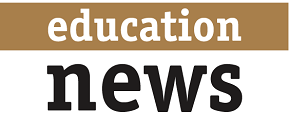Education in Australia generally begins with nursery and kindergarten but these stages are not compulsory. School is compulsory from 6 to 16 years old. The duration of studies depends on the state of Australia in which you will be living.
Indeed, it is important to know that each state in Australia has its own education system and its own ministry for the compulsory years of study. They are all responsible for setting up the school program that the government has chosen with the exams that go with it. School life is therefore organized differently from one state to another.
However, non-compulsory schools follow the AQF, the Australian Qualifications Framework which offers two different academic pathways.
If you decide to move to Australia, you can enroll your children in a public school. Public schools are free if you become an Australian permanent resident. The only expenses you need to take into account are uniforms and school materials (books…).
Australian education system
Primary education
Secondary education
Higher Education
There are two kinds of schools in Australia: public schools, funded by the government, and private schools (which include Catholic schools). Most schools require students to wear uniforms. Some public schools will charge tuition fees while others will not, you must inquire directly with the school of your choice.
In addition, public schools except for graduate studies accept students based on where they live, so you have to think carefully about where you will live.
Kindergarten
In Australia, kindergarten lasts two years. The first year is optional while the second year has become compulsory since 2013. In addition to public establishments, there are many private and paying organizations that welcome children from morning to evening.
Primary school
Primary school receives children aged six and lasts 7 years. In France, it corresponds to elementary school and the first two years of college. Eight subjects are studied during this cycle: English, maths, sciences, environment and society (history, geography, economy), technology, languages, EPS, plastic arts.
Each semester the gradebook is sent to parents and students – examinations (NAPLAN = National Assessment Program – Literacy and Numeracy) of checks are made in English literature and mathematics during the third, fifth and seventh year.
High school / secondary school
High school in Australia lasts 5 years (from year 7/8 to year 12) and students usually finish this cycle at 17 years old. Until the ninth year the same subjects as in primary school are taught and at the end of the year the pupils take the Naplan once again on English literature and mathematics.
At the end of the twelfth year students must take the final examination which is the WACE: Western Australian Certificate of Education.
After compulsory school, students have the choice of following a common study path: the AQF (Australian Qualification Framework), it includes two academic paths.
University
Australia has about 40 universities , only two of them are private. They offer different courses at all levels: Bachelor’s, Master’s, LLM, MBA, doctorate, etc. Moreover, they do not organize registration competitions.
For its part, France has signed an agreement with Australia which allows French students to follow Bachelor level studies after the baccalaureate.
Each university has its own admission criteria depending on the desired studies but in general students must have the WACE, good grades and a good evaluation in English.
The university course is made up of two cycles:
First cycle: leads to a Bachelor Degree in three to five years. An additional year allows you to have the Honor Degree
Second cycle: teaches post-graduate development courses from 6 months to one year and allows to have different degrees: Graduate certificate, graduate diplomas, master degree, doctoral degree (PhD
The price of universities in Australia is rather high. You must count between $10,000 and $50,000 plus accommodation, food and extras. The costs may even be as high as $60,000 for medical or surgical schools.
As far as housing is concerned, there are different solutions:
the university residence: shared kitchen, shared toilets…for a price ranging from €220 per month up to €700
youth hostels for a temporary solution: dormitories with 3 to 12 beds for a price of around €16 per night
homestay accommodation: furnished room with a rent of around €300 to €750 per month with meals generally included
private accommodation: rent ranging from €280 to €1,100 per month, you must inquire directly via online real estate advertisements or from real estate agencies
roommates: many roommate sites exist (Flatmates, EasyRoomate) for a price ranging from 195 to 700€ per month

